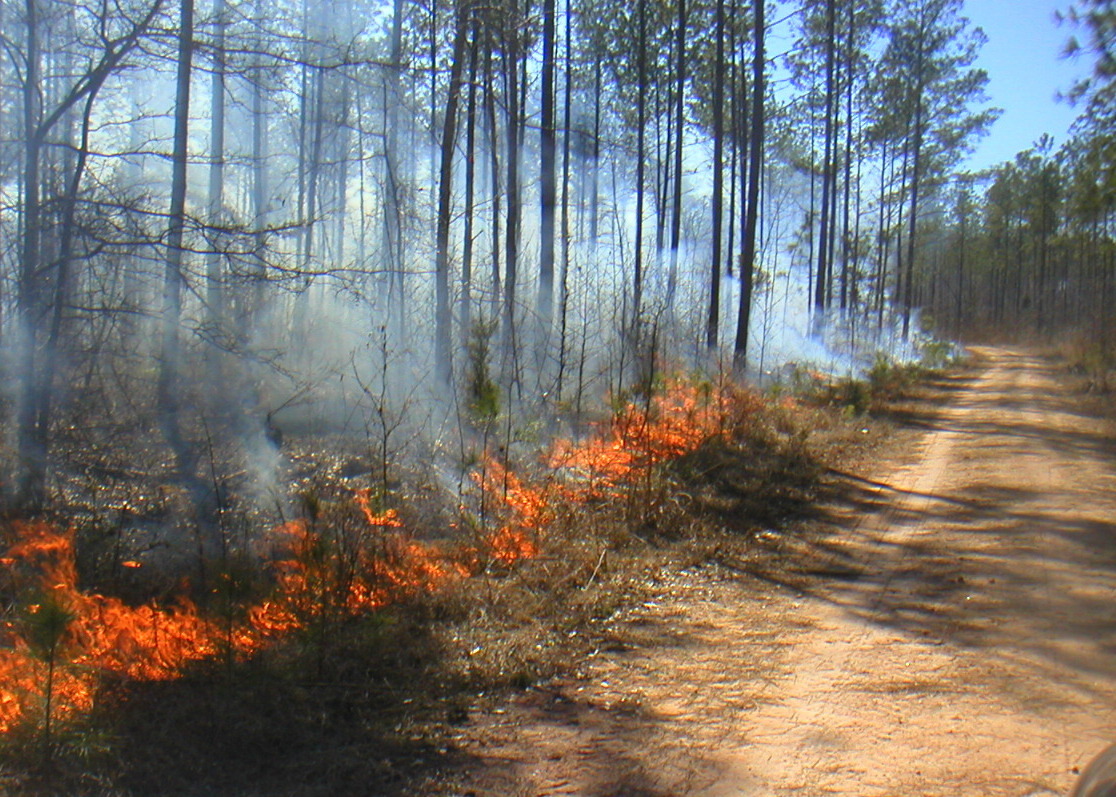AFM NEWS
Firebreaks: A Proven Strategy for Protecting Your Timberland from Wildfire

By Chris Miller
As wildfire threats grow more intense due to hotter, drier weather and expanding development into forested areas, proactive fire protection has never been more essential for timberland owners. One of the most effective tools in wildfire mitigation is the firebreak—a simple yet powerful line of defense that can mean the difference between minor damage and total loss.
Why Firebreaks Matter
Firebreaks are strategically cleared strips of land—devoid of trees, brush, and flammable debris—that serve to slow, redirect, or stop the advance of wildfire. By breaking up the continuity of fuel sources, firebreaks reduce the intensity and spread of a fire, providing precious time for suppression efforts and helping to protect valuable timber resources, infrastructure, and wildlife habitat.
They’re not just a theoretical solution—they work. In areas prone to seasonal wildfire outbreaks, properly maintained firebreaks often determine whether flames leap across property lines or are brought to a standstill.
Key benefits of firebreaks include:
· Reduced wildfire spread: Slows or halts fire movement by depriving it of fuel.
· Improved access for firefighters and equipment: Allows emergency responders to operate more effectively.
· Safeguarding timber investment: Protects decades of growth and future harvest revenue.
· Property boundary definition: Often aligns with roads, trails, or ownership lines, serving double duty.
How to Install Effective Firebreaks
Creating a firebreak isn't just about cutting a strip of land—strategic planning and ongoing maintenance are essential. Here’s how to do it right:
1. Plan the Layout
Start by identifying high-risk zones, property boundaries, and prevailing wind directions. Firebreaks should be placed:
· Along roads, ridgelines, or streams
· On the windward side of valuable timber stands
· Around homes, barns, and other structures
2. Determine Width and Type
The width of a firebreak depends on terrain, fuel load, and expected fire behavior. In general:
· 30 to 100 feet wide is typical for forested land
· Wider breaks are needed in areas with dense fuel or steep slopes
Types of firebreaks include:
· Mechanical breaks: Created using bulldozers or forestry mulchers to clear vegetation
· Manual breaks: Hand-cleared paths in less accessible areas
· Natural breaks: Using rivers, roads, or rocky areas as part of the firebreak system
3. Maintain Regularly
A firebreak is only effective if it’s maintained. This includes:
· Mowing or disking vegetation that regrows
· Clearing fallen branches and leaf litter
· Reestablishing lines after storms or timber harvesting
Who Should Be Involved
Effective firebreak installation often involves a combination of landowners, forestry professionals, and fire prevention agencies. Here’s who should be part of the process:
· Timberland Owners: Responsible for initiating fire protection strategies and maintaining their property
· Registered Foresters or Land Managers: Can help plan, design, and implement firebreak systems tailored to forest type and terrain
· State Forestry Agencies: Offer technical assistance, equipment, or even cost-share programs for firebreak establishment (e.g., through the NC Forest Service or similar agencies)
· Prescribed Fire Specialists: May use firebreaks as part of a broader fuel management strategy, such as controlled burns
Final Thoughts
Firebreaks are a low-tech, high-impact solution for wildfire prevention and damage control. For timberland owners, they represent an essential component of a long-term forest management and risk mitigation strategy.
By understanding the why, knowing the how, and engaging the right who, you can make your property more resilient, your timber investment more secure, and your community safer from the increasing threat of wildfires.
